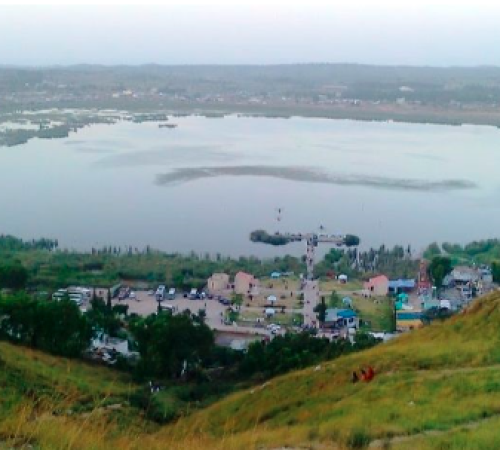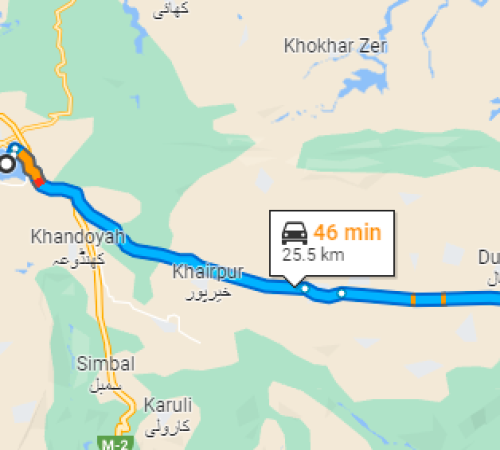Among Pakistan’s innumerable glories, is the Kallar Kahar Lake, located in Chakwal district of Punjab. Situated on the brink of M2 motorway, it is an easily accessible tourist attraction both from Lahore (224 km). It is famous for its natural gardens, dancing peacocks, spiritual sites and a salt water lake.
Kallar Kahar Lake, an artificial lake and one of the most significant reservoirs in Pakistan, makes up for this unfortunate fact and more.
Situated in the town of Chakwal in the Punjab province of Pakistan, the Takht-e-Babri is a stunning lakeside complex built in 1555. The complex was designed to be a place of worship and contemplation, and it features a beautiful mosque, a madrassa, and several other buildings. The Takht-e-Babri is surrounded by gardens and has a stunning view of the Kallar Kahar Lake.
The Shri Katas Raj Temples also known as Qila Katas, is a complex of several Hindu temples connected to one another by walkways. The temple complex surrounds a pond named Katas which is regarded as sacred by Hindus. The complex is located in the Potohar Plateau region of Pakistan’s Punjab province
The temples derive their holiness from the legend that following the death of his wife Sati, the Hindu god Shiva wandered inconsolably, while some of his tears collected in two ponds, one of which is the pond around which the Katas Raj Temples are set, while the other is at Pushkar.
The caves near Katas Raj are large in size, with two that seem to appear as rooms that can be entered easily. In the Mahabharata, the Pandava brothers are said to have lived in these caves while in exile. The entrance to a cave at Katas Raj
The formation and development of caves is known as speleogenesis, a geological process that takes millions of years to occur. Although these caves come into existence through a natural process, the entrances to the two caves at Katas Raj were developed by humans, as wooden doors have been installed at the entrances.
Renowned travel writer Salman Rashid told Dawn that these caves belong to the pre-historic era. “These caves were not built by proto-humans, but rather, they came into existence through a natural process.
After the arrival of religion, humans used to worship in these caves and later many revered saints worshipped and meditated in these caves,” he added.
These caves, however, are not on the list of protected sites, according to Punjab Archaeology Department Deputy Director Maqsood Malik, who said the archaeology department “only looks after the Katas Raj temples and Malot Fort.
These caves are very old, and were used for three purposes: primarily for meditation, secondly for residence and thirdly, as hideouts.
– TRANSPORTATION
– MEALS
– PHOTOGRAPHY
– SIGHTSEEING
– FIRST AID BOX



Copyright © 2024 NFA. All rights reserved.